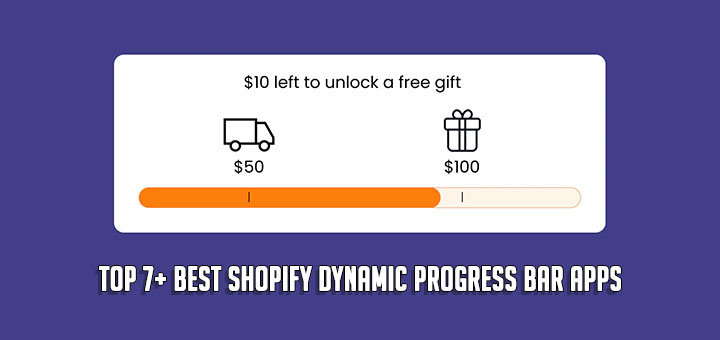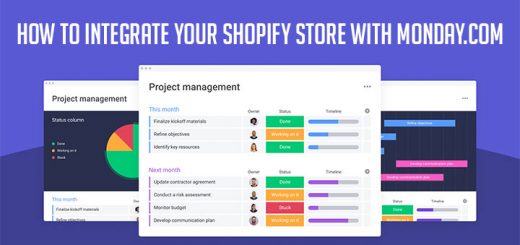What Shopify Flow is and how to use it for ecommerce automation
Bill Gates once said, “The first rule of any technology used in a business is that automation applied to an efficient operation will magnify the efficiency. The second is that automation applied to an inefficient operation will magnify the inefficiency.“
However, your time is spent scheduling sales, sending personalized welcome messages to new customers, loading new products and publishing them to your store and social media channels.
As an eSeller, you know there are hundreds of small tasks that might only take a few minutes to execute. When you look at the big picture, that time adds up and even stunts productivity and growth. The demands on you and your staff mount as your business scales, and the old ways of doing things no longer cut it anymore. They’re inefficient and repetitive. They also become increasingly complex. While you could hire more employees to do these seemingly endless tasks, you’ll quickly find that their time and energy is costly and could be better used in other ways to build your business.
The solution? eCommerce automation, specifically Shopify Flow which is software that streamlines those manual tasks. This gives your team back that valuable time that can be spent growing bigger and faster.
What is eCommerce Automation?
Simply put, eCommerce automation is the use of software applications and related tools that create a sequence of processes. The goal is to reduce redundancy, convert tasks and processes, and increase growth and efficiency.
In other words, it’s an almost hands-free operation that allows eSellers to focus on revenue-generating activities instead of worrying about various tasks.
These automations can come in a variety of forms, such as:
- Tagging and rewarding customers for segmentation and marketing
- Optimizing and standardizing visual merchandising
- Streamlining tracking and reporting
- Preventing fraud
No matter the task, it’s all working towards the same goal — to turn those hundreds of tasks into automated workflows so you can get more done in less time.
How Users Benefit from Shopify Flow
Automation is one way to make sure that your time is best spent on bigger and better things. With Shopify Flow, it only takes seconds to automate thanks to easy to use templates. There are no disconnected apps, third-party tools, or workarounds. Instead, everything is managed, and your operations are streamlined all in one place.
According to Shopify, Flow “works best when adopted by interconnected roles and departments within a business”. Check out some examples below.
- Operations Managers: Automation can be used for a variety of inventory, shipping, and product-related workflows. Products can be automatically tagged and added to collections based on their title, SKU, or type, which helps standardize visual merchandising.
- Customer Service: You can tag customers based on the specific products they buy and the value of their order. Customer service can then be instantly notified to reach out with a personalized thank you message or invitation to their loyalty program invitation. For returns, customer service can be notified to follow up with the buyer, helping to maintain a strong relationship.
- Preventing Fraud: Flow can be used to augment Shopify Plus’ existing risk analysis. When high-risk orders are identified, they’re immediately flagged. Your own security or fraud-prevention specialists can then be notified for hands-on review, something that can save your thousands of dollars in possible lost revenue.
- Marketing and Advertising: You’re always adding new products, and with Flow, your marketing department can be notified and given product details, meaning they can start advertising sooner. Plus, when you schedule sale changes in advance, your marketing team will be better prepared to plan promotions.
- Web Development: eCommerce automation can customize everything from theme changes and merchandising opportunities to displaying the best payment or shipping options. Once created, there’s no need to code and recode repetitive updates. Your development team will have more time to focus on other things.
Tasks That Can Be Automated on Shopify Flow
Flow uses trigger condition action logic to automate processes. Below are tasks that can be easily automated:
- Security Monitoring
- Inventory Management
- Advertising Management
- Customer Segmentation
- Tracking and Reporting
- Personalized Customer Service
- Product Targeting
- Shipping
- Pricing and Promotions
- Storefront Visuals
Automating these tasks gives you back more time and energy, not to mention thousands in expenses. Plus, your team can use that time for more creative endeavors, sales and marketing, and personal development.
How Shopify Flow Has Evolved
Since the launch of Shopify Flow, the company shared that more than 3,633 businesses have offloaded 1.1 billion business decisions. That’s roughly the equivalent of 9.2 million hours. Yet they’re still looking for ways to improve and help eSellers even more.
That includes:
- Detailed Workflow Monitoring: Embedded in Flow, this feature helps track how workflows are performing at a glance, view a list of all workflow runs for easy troubleshooting, and increased visibility into individual workflow behavior, so you can hone in on any issues.
- New Ways to Automate: Flow can start a workflow when a draft order is created with the draft order trigger, update customer note action, and includes an “any, all, or none condition functionality” with product fulfillment conditions.
- Connector Apps: Shopify works with a variety of apps, that when installed, their custom triggers and actions are automatically available for you to use in Shopify Flow.
The Bottom Line
Whether it’s rolling out theme changes for seasonal promotions or showing and hiding payment options relative to customer criteria, Shopify Flow can give you back the one thing you can never have too much of time.
Automation is literally the future of eCommerce, and with Flow, you can focus on building and growing your business and your bottom line.
Source: Payoneer’s Blog









Very interesting!